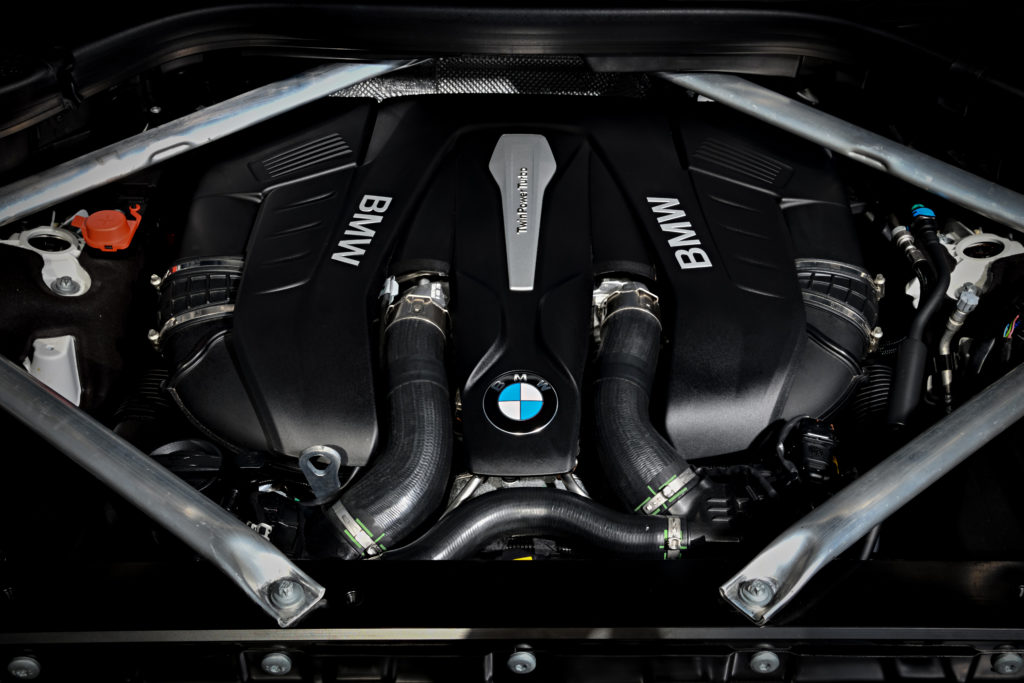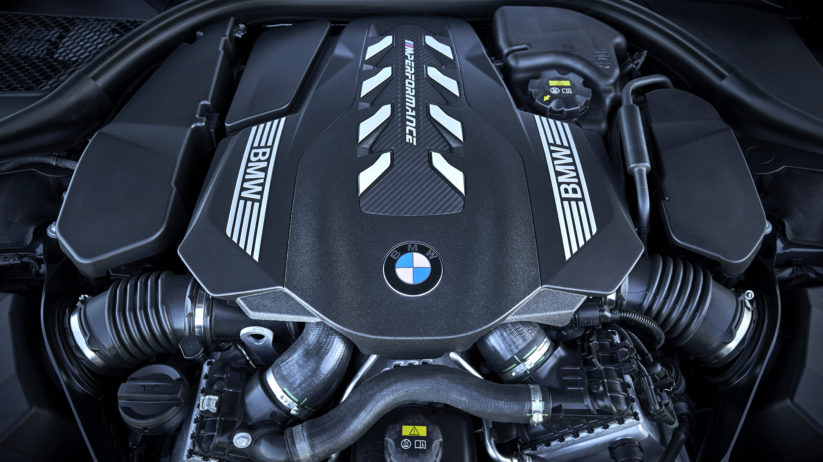BMW’s highly innovative N63 V8 cannot catch a break when it comes to oil consumption—and lawsuits filed on behalf of dissatisfied owners who have grown tired of adding several quarts of expensive synthetic between services. Unlike the previous cases though, the latest filing specifically cites newer, updated versions of the N63 as suffering from the same inherent flaw as the original 2008 design, which was the first volume production engine to market with a hot-vee layout.
Last year we reported on the settlement of one of the first N63 lawsuits, which played out over more than four years. Concessions on the part of BMW, which are available to customers on top of the N63 customer-care package first announced in 2014, are of a compensatory nature more than anything else; a true solution for the N63 and its propensity to burn oil remained elusive.
A few months later, in 2018, another lawsuit was filed, this time citing the Magnuson-Moss Warranty Act as cause, and asserting that BMW has yet to resolve the underlying issues with the N63. Specific technical service bulletins are also mentioned as being used to hide the overarching oil-consumption issues, rather than actually addressing them.

Now, nearly halfway through 2019, yet another lawsuit has been filed, which alleges that a host of new BMWs, many of which are in production right now with the newest versions of the N63, suffer from the same woes. Moreover, while previous lawsuits were a bit more vague in their approach, the latest filing makes a direct claim that replacement engines provided to customers under the customer-care package (CCP) do not address the problem of disappearing oil, and that even a fresh long block can soon develop a habit of consuming oil. Once again, specific TSBs are cited, some of them as recent as 2017 and late 2018.
What makes this most recent N63-related filing noteworthy beyond its its baseline assertions are the specific vehicles listed as being affected. Previous suits contrastingly focused on early N63-powered BMWs, spanning from when the engine first arrived on the market around 2009, up until 2014. The settlement reached in relation to the lawsuit from 2014 also focused on the production period encompassed by the CCP, but now, all updated versions of the N63 are claimed to consume excessive amounts of oil:
- 2013-2019 BMW 750i/750Li
- 2013-2018 BMW 650i
- 2013-2019 BMW 650i Gran Coupé
- 2013-2016 BMW 550i GT
- 2014-2016 BMW 550i
- 2017-2019 BMW M550i
- 2018-2019 BMW M850i
- 2014-2019 BMW X5
- 2014-2019 BMW X6
- 2018-2019 BMW X7
The above list contains some of BMW’s most important current models, and as of this writing, vehicles cited like the M850i, X5, X7, and M550i are using updated versions of the N63, such as N63B44M3 and N63B44T3 (both N63TU3) which were introduced in 2018 for the 2019 model year. This means that, as many have long suspected, all versions of the N63 could fall prey to the latent heat associated with the innovative hot-vee layout (essentially, the exhaust manifold and turbochargers are mounted in the valley formed by the cylinder banks, what had previously been home to the intake manifold on older V8 designs).

As is chronicled in our in-depth rundown of BMW’s current V8 design, the conventional N63 has been updated no fewer than three times since first being announced in 2008, with incremental changes occurring in 2012, 2016, and as recently as 2018. BMW is continuing to install these latest versions to models such as the M550i, which will soon be switching from the N63B44O2 (N63TU2) to the same N63B44T3 (N63TU3) found in the M850i and G12 7 Series LCI. Specific details of what has been refined over the years are can be found in our discussion of the N63 and S63, but beyond increasingly powerful direct fuel injection and more efficient turbos, thermal shielding was added between the exhaust manifold and cylinder heads for the most recent TU3 update of 2018.
The latest filing originates from a plaintiff who claims that they were forced to continue their habit of adding oil to their 2015 N63-powered X5 even after it received a replacement long-block engine under the CCP. Specific BMW TSBs relating to the N63 over a time period stretching from 2013 to as recently as 2018 are also referenced, and some of these include SI B11 01 13, which instructs technicians to add two quarts of oil to engines in need of a top-off instead of just one, as called for in the manual and iDrive.
SI B11 03 13 modified the oil-consumption specification for all BMW engines (excluding M units) as falling within factory parameters even with oil consumption as high as one quart per 750 miles driven. A month later, SI B11 04 13 was issued to address customer complaints of low-engine-oil messages being displaying too frequently. SI B11 01 17 covers a new procedure for replacing N63 valve seals, and subsequent bulletins from 2017 and 2018 cover leak diagnosis on turbocharged V8s. Perhaps most important, during October 2018, BMW amended SI B11 01 13 to encompass more models than previously outlined.
The lawsuit goes as far as specifically asserting that the hot-vee layout of the N63 is the culprit for the oil-consumption problems, describing the change as a complete reversal of previous methods, which other automakers have been keen to avoid. This is where things get complicated, as in the wake of the N63 changing the game over a decade ago, Audi—and more recently Mercedes-AMG—have followed BMW’s lead, both producing hot-vee designs for their performance lineups, and both in a four-liter displacement.
Although the Audi and AMG designs are slightly newer, and there are likely to be far fewer on the road in comparison with the N63, problems with these engines, specifically oil consumption, do not seem nearly as prevalent.—Alex Tock
[Photos courtesy BMW AG.]





















